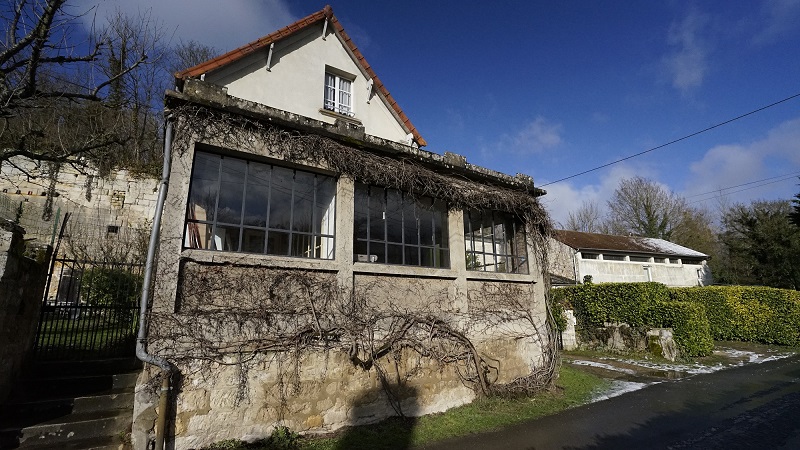Informations directionnelles
Emprunter la petite route presque en face de l’ancienne ferme, passer au-dessus de la Viosne. Prendre à droite, puis longer l’habitation par la droite. Continuer encore un peu jusqu’aux anciennes cressonnières.
Prochain point : lat="49.16594" lon="1.9389"
Clochard hamlet
Former working farm and mill
A former farm …
Take a stroll through the archives and you’ll see that the hamlet’s name has varied between Clochars, Clochart and Clochard.
The first written traces of the buildings were found in a 1240 text when the Abbey of Saint-Denis sold the mill to Pierre de Clochart. At the time, the mill and the farm on which it sat formed one large property, but the farm no longer exists.
Two barns adjoined the miller’s dwelling, which was block-built of quarry stone and plastered. It is next to the quarry and divides the courtyard in two. The cave-like outbuildings included a cellar used as a dairy, a bakehouse, a cowhouse, two stables (one of which could accommodate up to seven horses) and a henhouse. Nesting holes on the inside walls were home to pigeons.
…and a factory that was once a mill
A mill, stables and a cart house were opposite where the wash-house once stood. On a deed of sale from 1764 the mill is described as “a water mill producing wheat and other flour grains comprising a sandbar, mill, chamber and grain store above”. The fear of floods and other weather events was so deeply anchored in the people of the time that a special clause was often included in the mill leases. In 1858 the lease for the Clochard mill clearly specified that the miller “may not claim compensation of any kind in the event of unemployment due to frost, floods or other foreseen or unforeseen events”.
At the end of the 19th century, the mill was converted to a celluloid factory producing items such as knife handles, canes, piano keys and more. Later on it produced flax-tow used whose uses included caulking the hulls of wooden boats.




